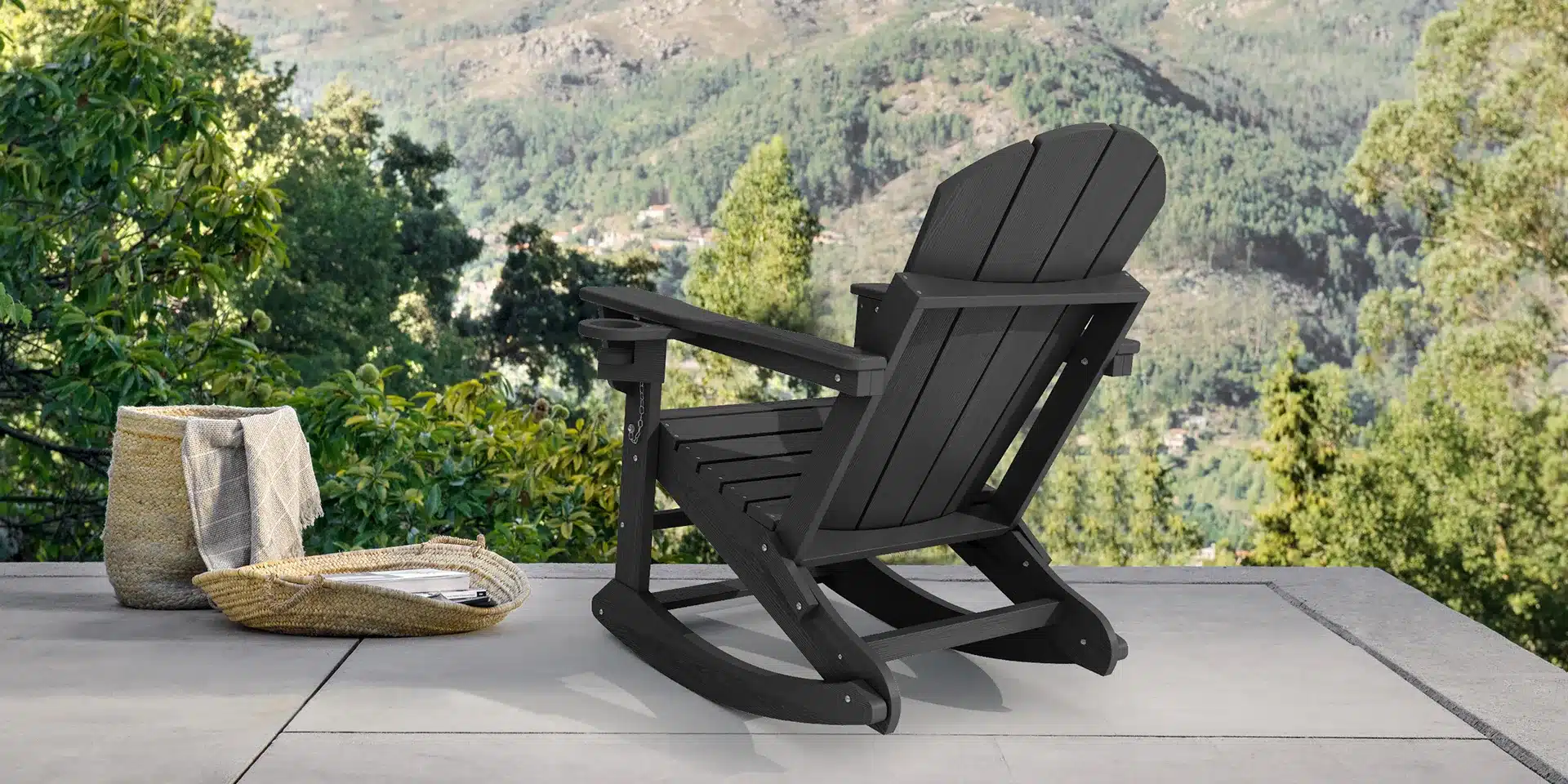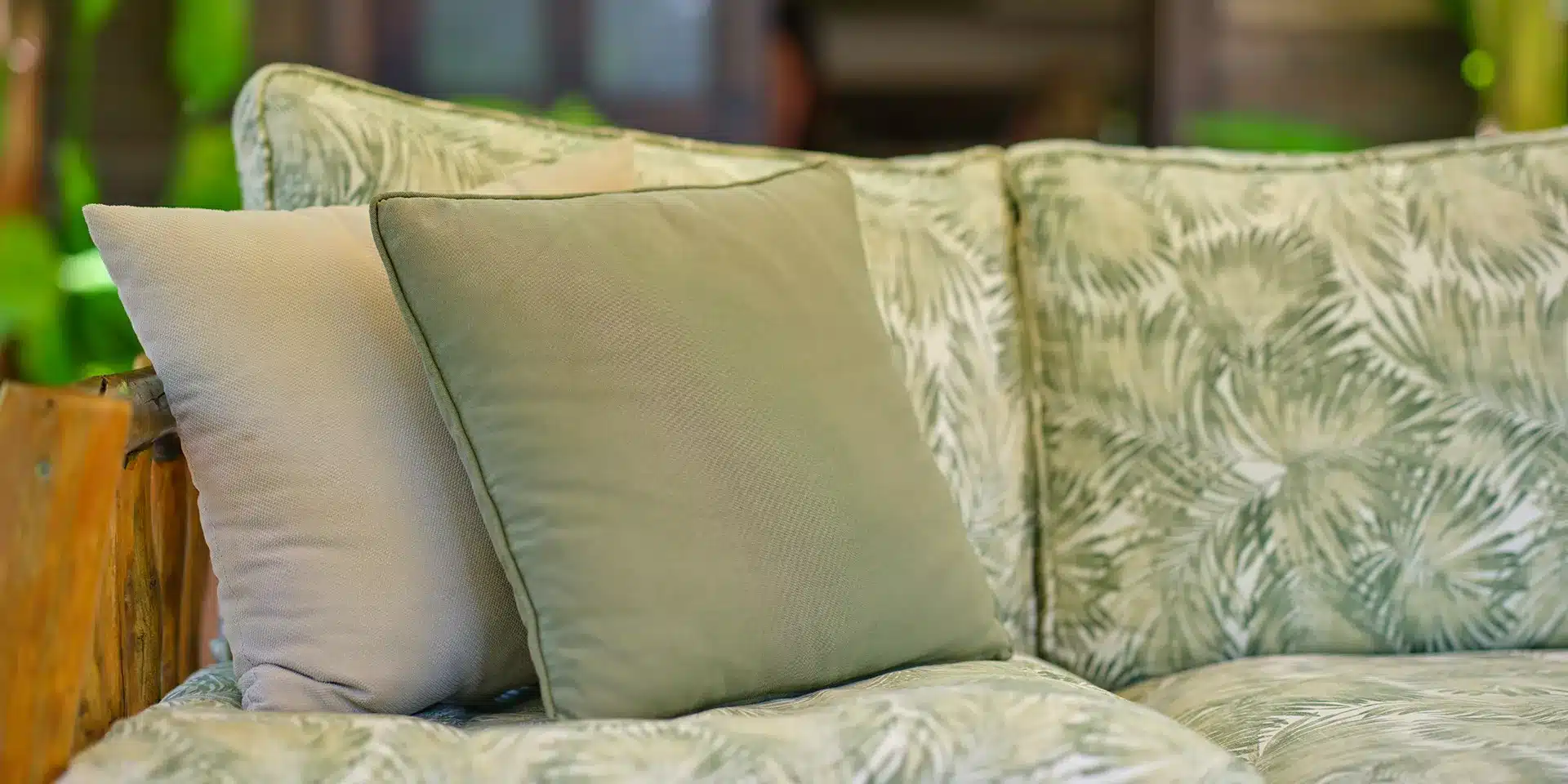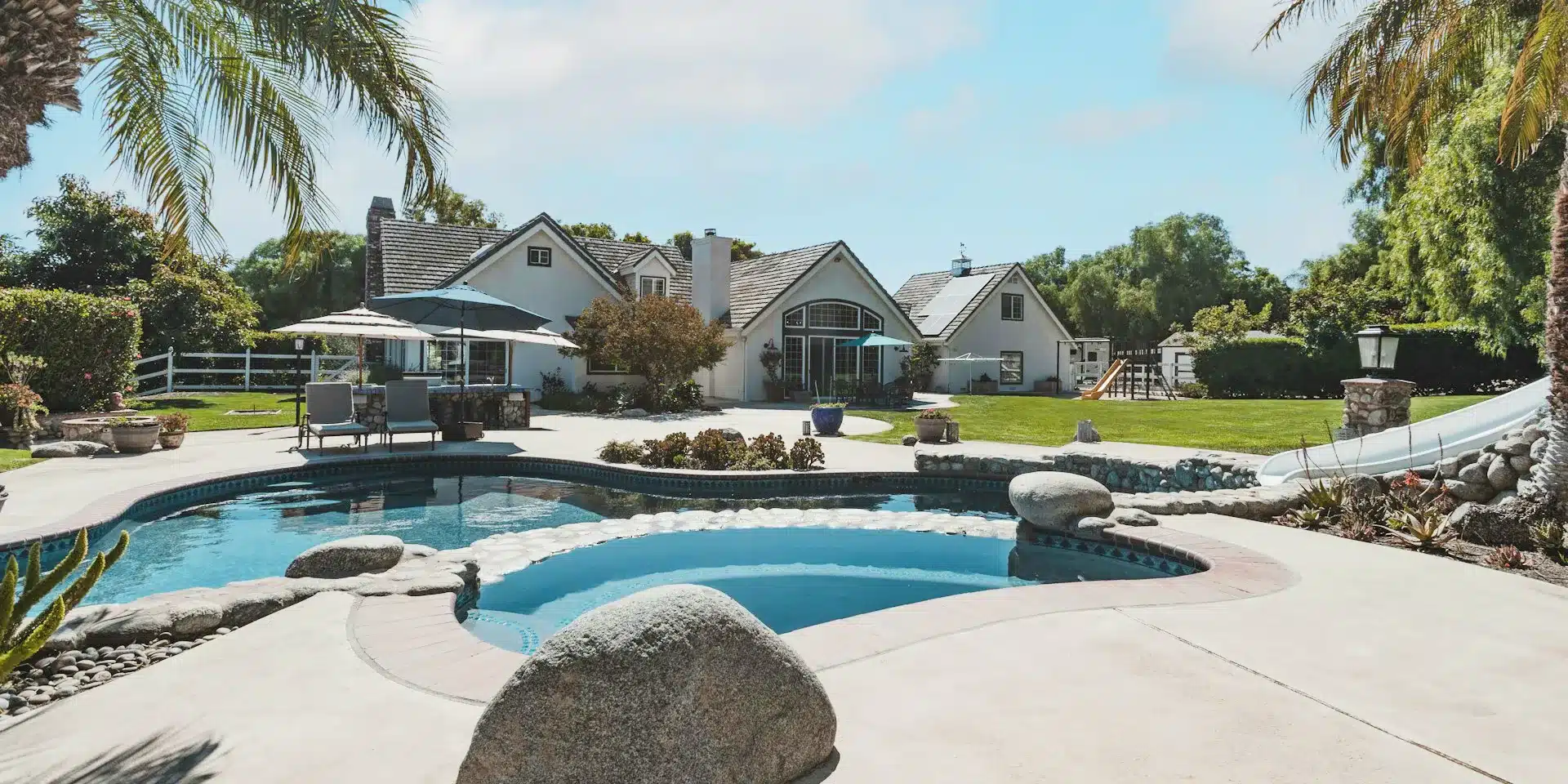Who is the rocking chair for?
When choosing outdoor rock chairs, consider who will use it. Do you buy for yourself or for others? Will adults or children use it? The answers to these questions will help you choose the right chair size, load -bearing ability and design.
In addition, if you intend to use a chair frequently, you may need to invest in a high -quality, durable alternative, and you can withstand continuous use and outdoor exposure. However, if it is only occasionally used, the cheaper choice is enough. Considering the expectations of chairs will help you make a more wise decision and make sure you get a rocking chair suitable for them.
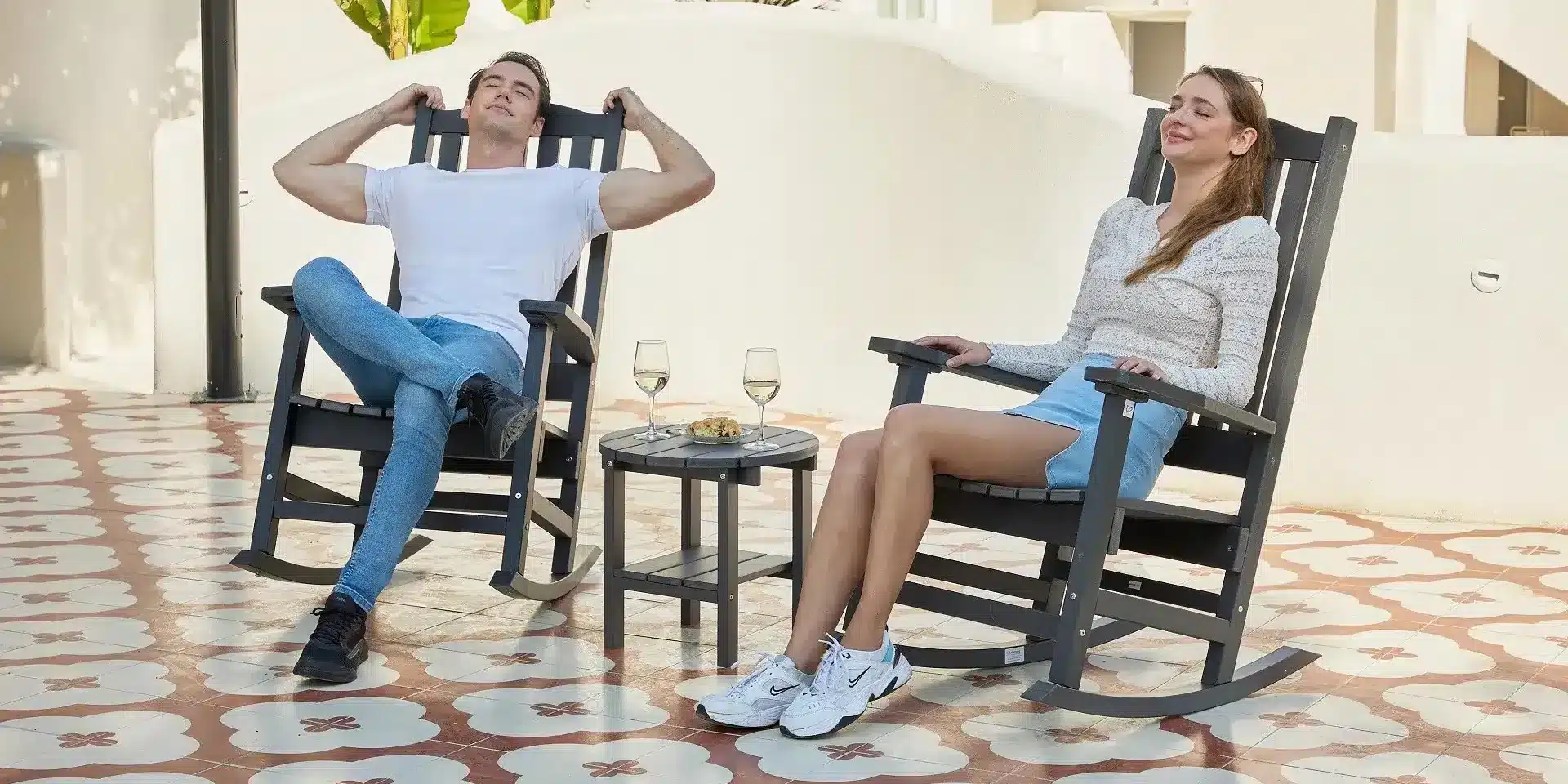
Check your surface
The first thing we need to do is choose a suitable surface for the rocking chair. To achieve optimal rocking motion, pick a smooth, flat surface such as concrete, outdoor tile, or wood flooring. Rough or uneven surfaces, like grass, gravel, or cobblestone, may make it difficult for the runners to move smoothly.
Measuring Your Patio Space
Next, make sure the chair has enough space to be placed. In order to prevent the rocking chair from hitting the wall or other furniture during the swing, we need to leave 2-3 inches of clearance around the rocking chair. This free space makes it easier for people to move around and ensures the rocking chair swings normally.
Set Budget
Setting a budget when choosing a rocking chair helps you make a conscious, cost-effective decision while ensuring financial responsibility and long-term satisfaction with your purchase.
Start by determining the maximum amount you are comfortable investing in a rocking chair. Research the average prices of rocking chairs to get an idea of the market range.
Consider the chair’s quality, materials, and features, and ensure your budget aligns with your desired level of comfort and durability.
Additionally, factor in any additional expenses like shipping or accessories. Lastly, compare prices from different sellers or retailers to find the best value within your budget.
Choose the Right Material Type
When choosing the material for a rocking chair, you need to consider durability, weather resistance, comfort, aesthetics and maintenance. The following are some common rocking chair materials.
Wooden
Wood is a popular material for outdoor rocking chairs, with softwoods like pine and cedar being common choices due to their affordability and availability.
However, softwoods are prone to scratching and denting, requiring annual refinishing to protect them from the elements.
Hardwood, derived from deciduous trees, is a preferred material for outdoor furniture due to its natural look and durability against dents, scratches, and scuffs.However, it is expensive and has high maintenance costs. Regular staining and polishing is required to keep it looking good.
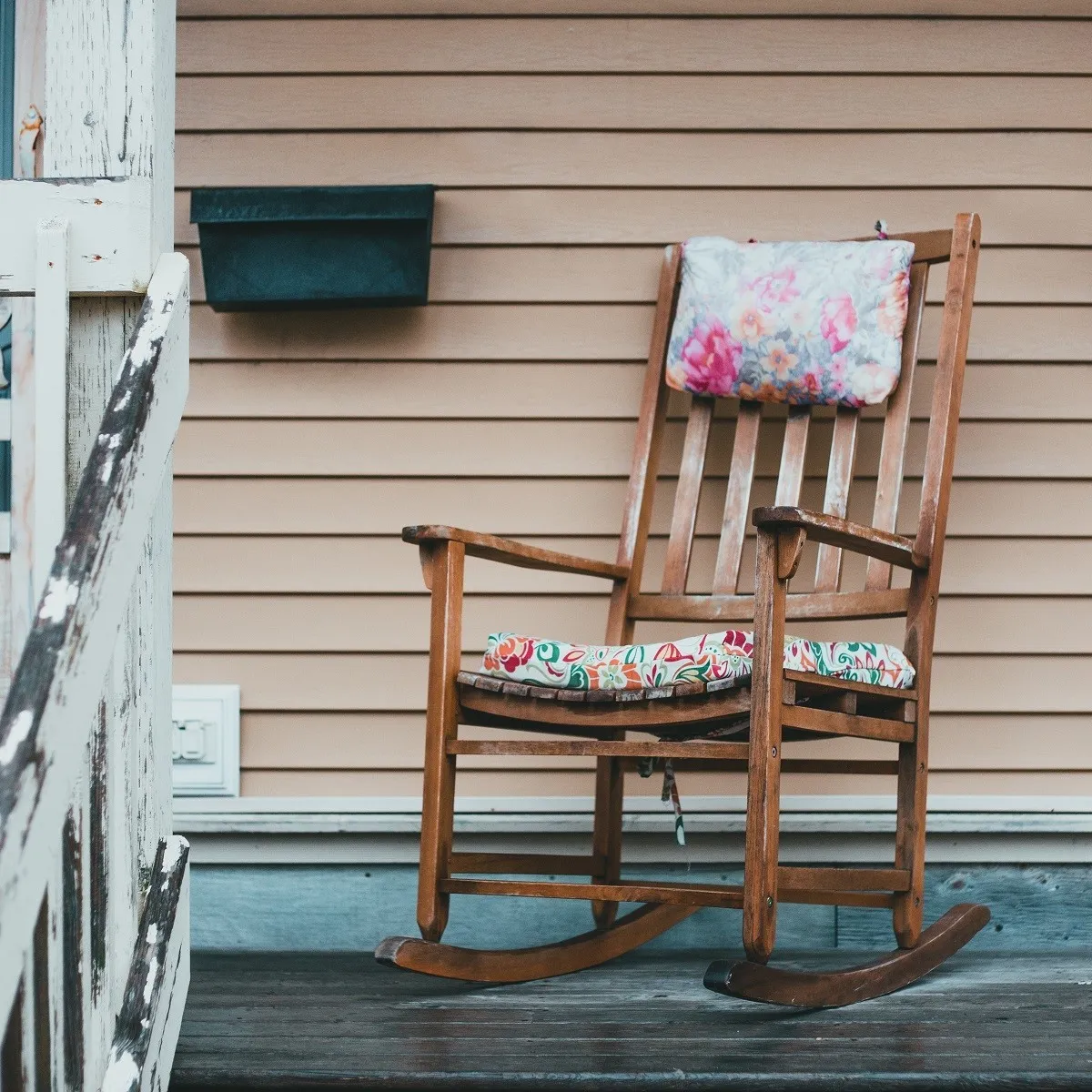
Metal
Metal rocking chairs using materials such as wrought and aluminum. Wrought iron is a soft, magnetic substance with strong tensile and elasticity strength. Because of this, it is an ideal choice for outdoor furniture that must endure pressure and abrasion.
Aluminum, on the other hand, is lightweight, long-lasting, and waterproof. It is easy to carry around to fit various placed in your patio. However strong wind might also bring them around as well as they might get exteremely hot after exposing under the sun.
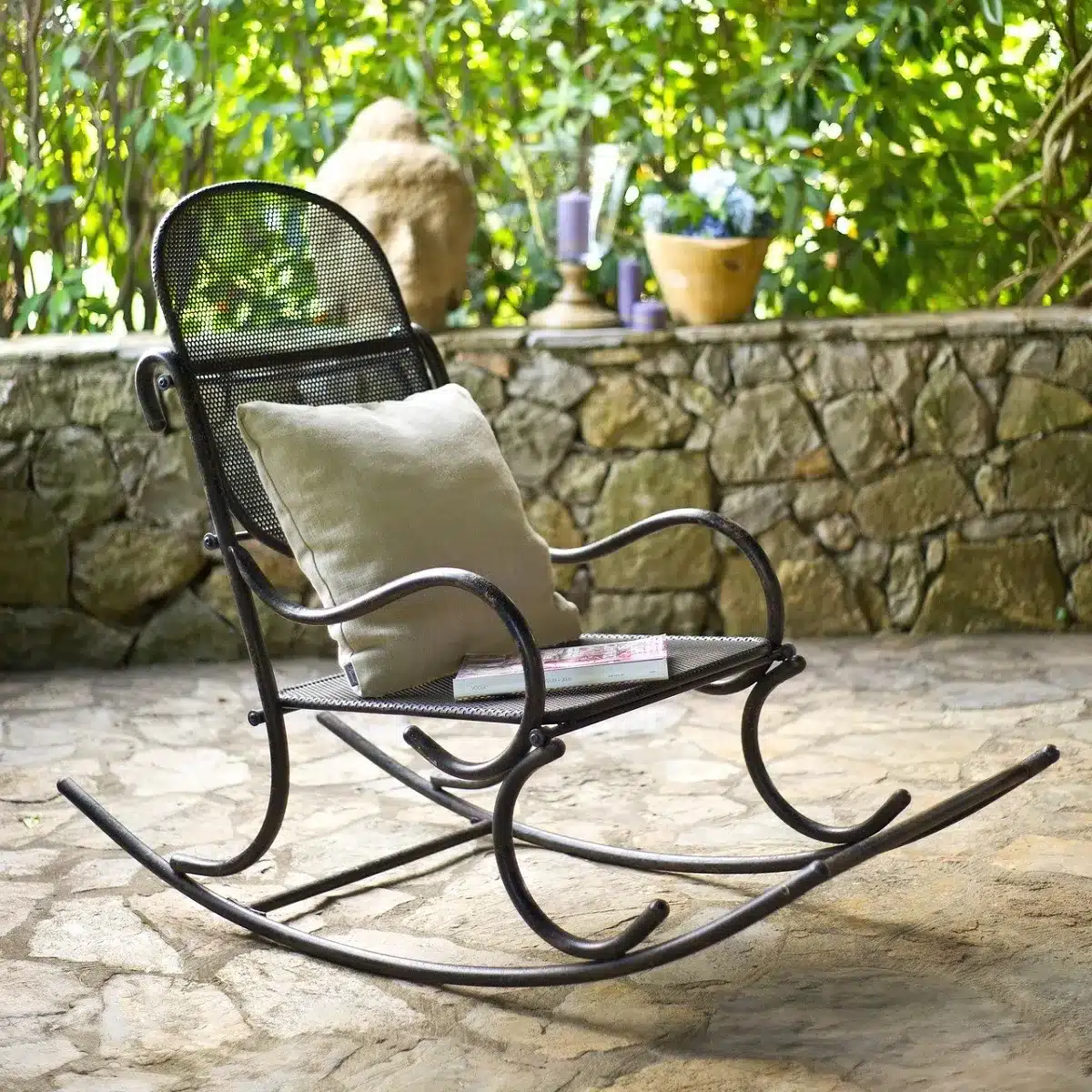
Wicker
Wicker rocking chairs are a popular choice for outdoor furniture because of its classic appearance, comfort, and range of forms and patterns. Wicker is a natural material created from plant fibers such as bamboo or rattan, but synthetic materials such as resin are also available.They’re intended to be comfortable and soothing, however, more expensive than other types of outdoor rocking chairs, and they require regular maintenance to stay in good shape.
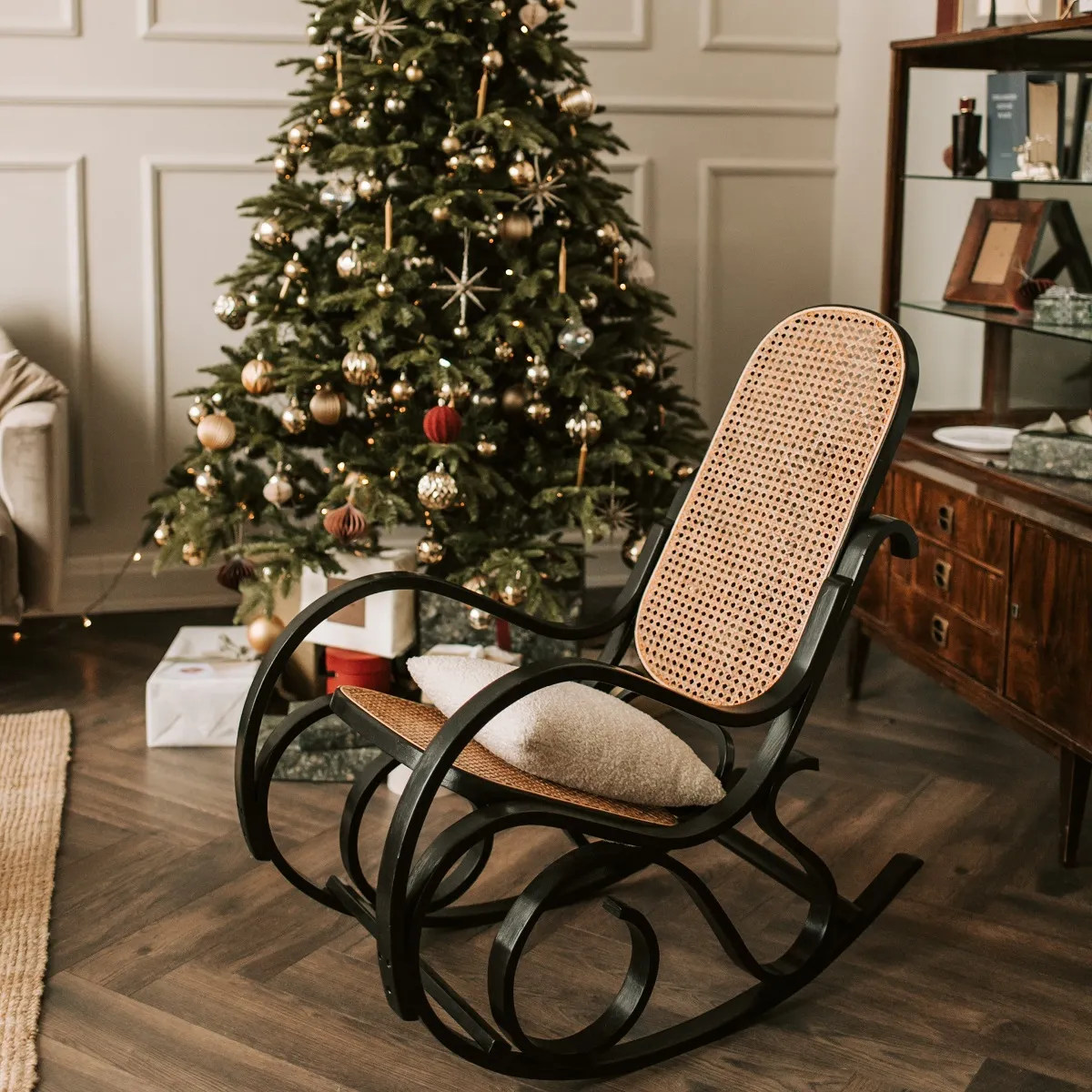
HDPE
HDPE is a common high-quality synthetic resin material. Synthetic resin is made from a synthetic material that is designed to look like natural wood, but is much more durable and resistant to the natural damage. One of the main advantages of synthetic resin rocking chairs is their durability. They are resistant to weather, UV rays, and moisture, making them a great choice for those who live in areas with harsh weather conditions.
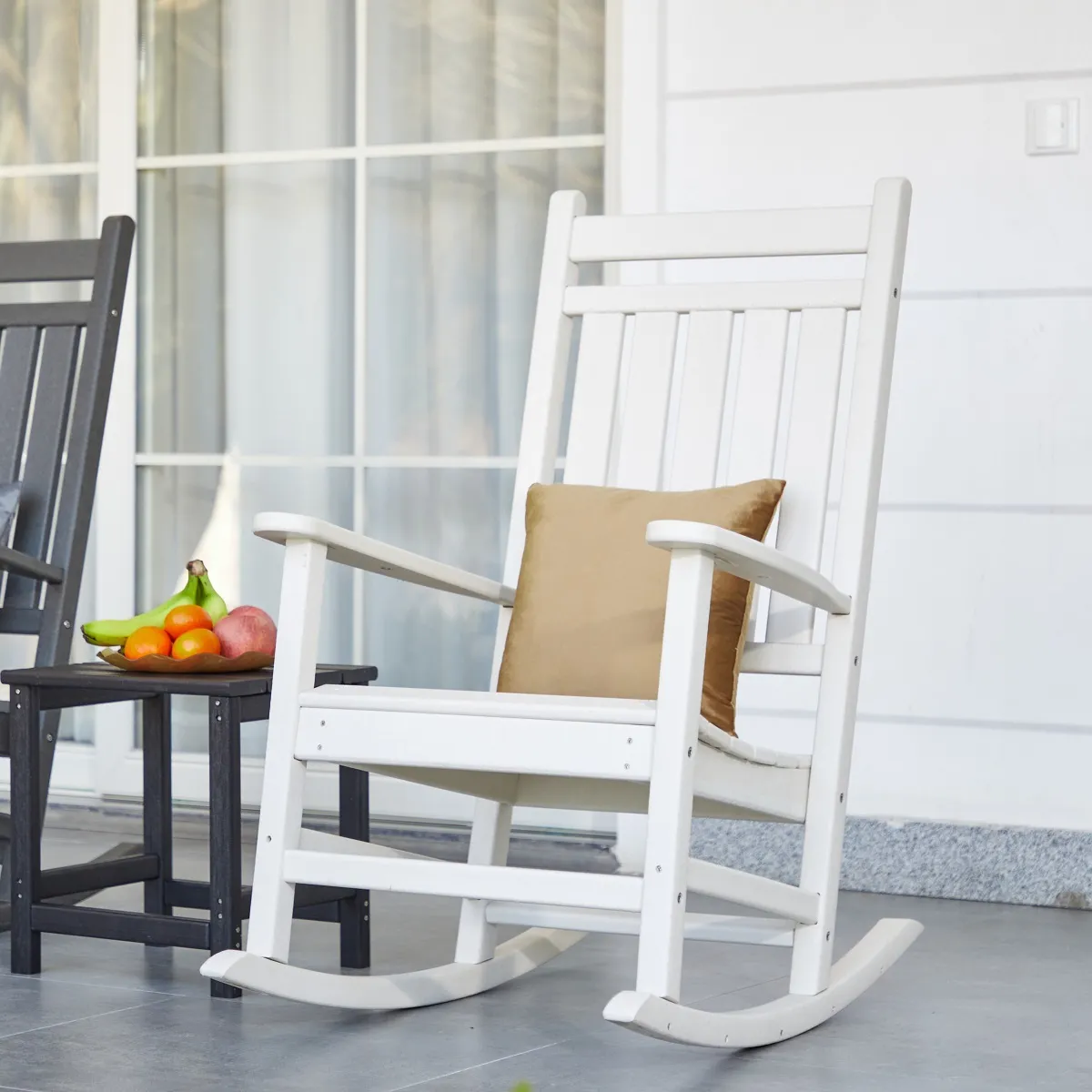
Find the Ideal Rocking Chair Type
Once you have decided on the material for your rocking chair, it’s time to choose the type and style that best complements the overall aesthetic of your yard.There are many many different rocking chair styles, browse our categories and find the outdoor rocking chair that is right for you.
Adirondack Rocking Chairs
Porch Rocking Chairs
The classic or traditional porch rocking chair comes to people’s minds first when they think of rocking chairs and relaxing by the porch. These chairs are timeless and classic in terms of style and suitable for home styles.
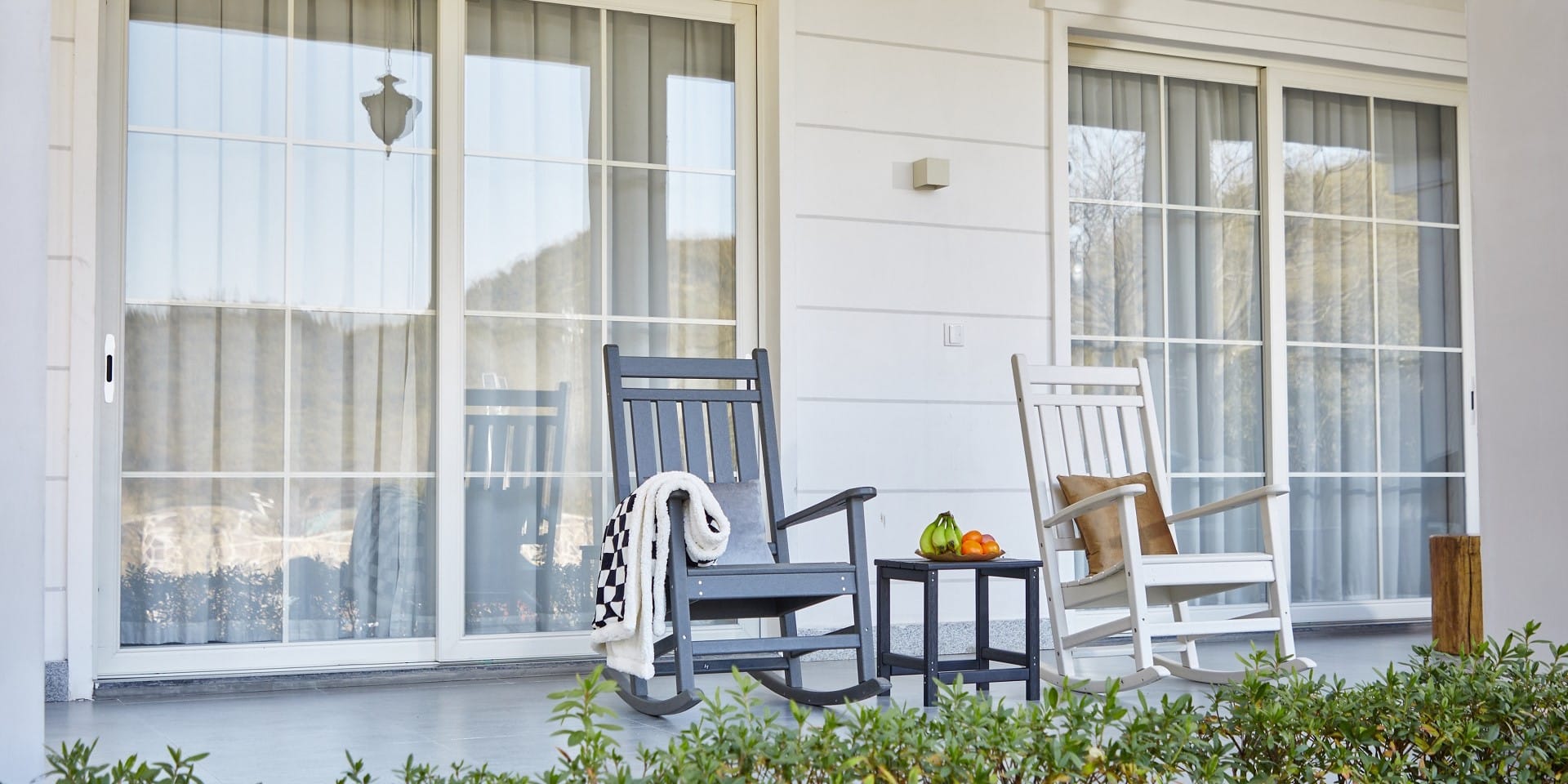
Versatile Rocking Chair
An upgrade on the traditional Adirondack rocking chair, with the versatile feature, allows you to fold the chair and store it easily. Also, turn the chair into a regular Adirondack Chair with an ottoman when you are not in the mood for rocking.
Swivel Rockers
Swivel rocking chair is a type of chair that combines the ability to swivel or rotate in a circular motion with the relaxing motion of rocking. These chairs feature a base that allows for 360-degree rotation, enabling users to easily change their facing direction without having to move the entire chair.
Gliders
A glider rocking chair, also known as a glider chair or simply a glider, is a type of chair that moves back and forth in a smooth, gliding motion. Unlike traditional rocking chairs that rock in an arc, glider chairs glide on a fixed track or mechanism, providing a gentle and continuous motion. This design eliminates the risk of tipping over and offers a more controlled and soothing experience.

Pick a Rocker Color
When choosing colors for an outdoor rocking chair, consider the existing surroundings and natural elements. Complement the outdoor space by selecting hues that harmonize with the environment or reflect your desired style.
Earthy shades like teak, beige, or dark green blend well with outdoor surroundings, creating a harmonious and organic feel. Colors inspired by the seaside, such as blues, whites, and sandy tones, evoke a tranquil and beachy atmosphere.
Vibrant shades like red, yellow, or orange will create a lively and energetic outdoor space. Classic neutral colors like gray, taupe, or black provide a timeless and sophisticated look that complements various outdoor styles.
At serwall, rocking chairs are available in these colors:
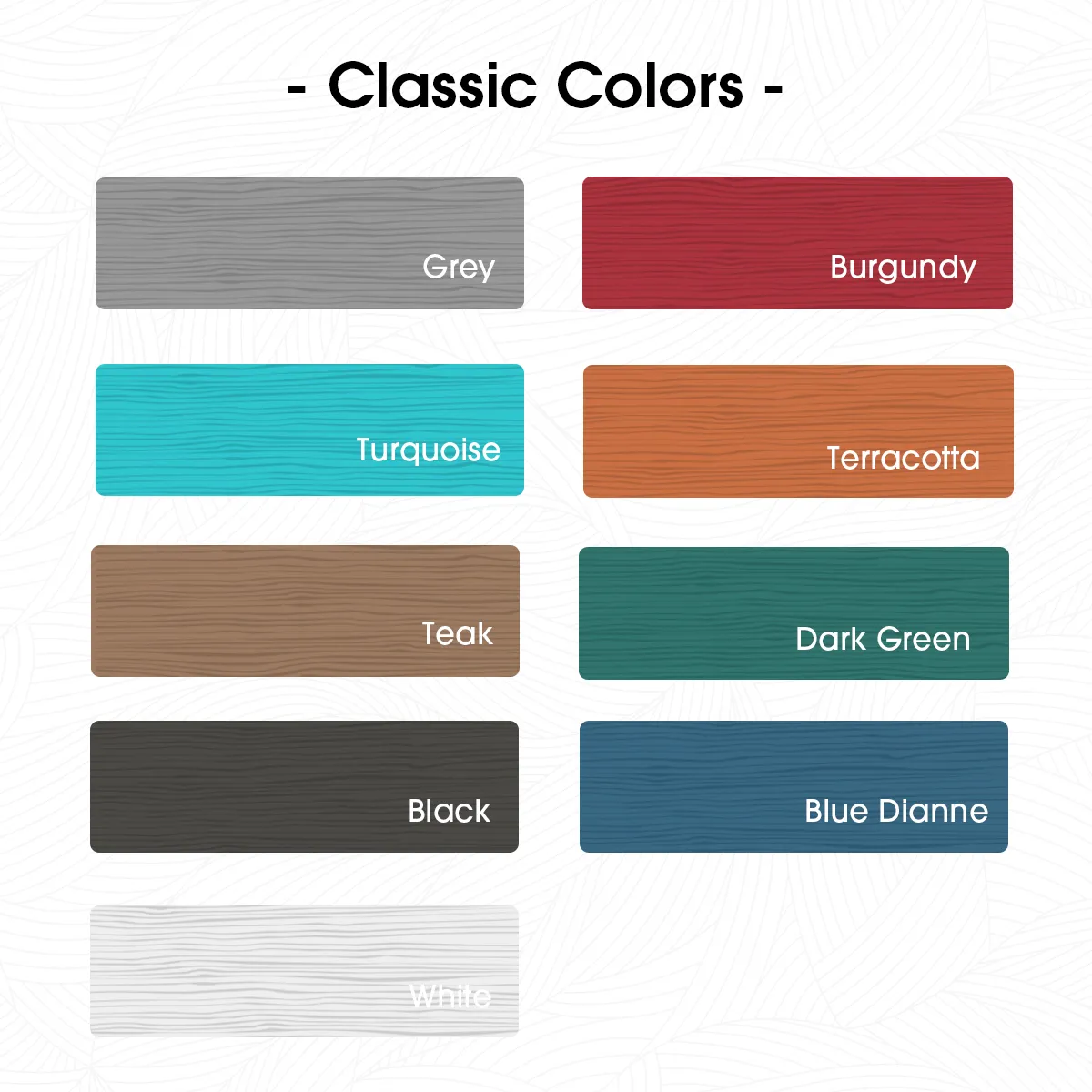
Decorative your rocking chair
Accessories play a significant role in transforming your patio area into an inviting and stylish outdoor space. By carefully selecting and incorporating the right accessories, you can add functionality, aesthetics, and personal flair to your patio.
Cushions
Enhance your patio with umbrellas or shade sails, offering shade and sun protection. These additions provide relief on hot days and contribute elegance and functionality to your outdoor space.
Consider adding a side table to your patio area for convenience and functionality. It provides a surface for placing drinks, snacks, and other items. Versatile and practical, a side table is a valuable addition to any outdoor space.
Patio Umbrella

Enhance your patio with umbrellas or shade sails, offering shade and sun protection. These additions provide relief on hot days and contribute elegance and functionality to your outdoor space.
Side Table

Enhance your patio with umbrellas or shade sails, offering shade and sun protection. These additions provide relief on hot days and contribute elegance and functionality to your outdoor space.
Maintenance Tips
Even though you’re getting a high-quality rocking chair, performing proper care and maintenance will help extend the lifespan of your outdoor rocking chairs, keeping them in optimal condition for years.
Maintain regular cleaning by wiping with a damp cloth or deep cleaning with soapy water. Avoid harsh chemicals that may damage the finish.
Inspect regularly for cracks, rust, or loose components. Repair or replace damaged parts promptly.
Cover or store chairs during inclement weather to prevent damage from rain, snow, and prolonged sun exposure.
Follow the manufacturer’s guidelines for specific care instructions and perform routine maintenance tasks as recommended.

In conclusion, assess the materials, comfort, durability, and style to ensure a chair that will bring joy and relaxation to your outdoor space for years.
Whether you envision yourself rocking away while enjoying the sunset or sipping a cup of morning coffee,buying a high-quality outdoor rocking chair will enhance your outdoor experience and create lasting memories. Happy rocking!
FAQS
To assemble an outdoor rocking chair, follow these steps:
- Start by unpacking the chair and laying out all the parts and hardware in a clear space.
- Begin assembling the chair according to the provided instructions. Follow each step sequentially, ensuring proper alignment and tightness of the connections.
- Before using the chair, test its stability by gently rocking it back and forth. Make sure it feels steady and there are no wobbles or loose parts.
If you have any questions during assembly, refer to the manufacturer’s customer support or seek assistance from a professional.
The motion mechanism is the main difference between a rocking chair and a glider. A rocking chair moves in an arcing motion on curved rockers, while a glider moves back and forth on a fixed track. Choose different chairs according to your personal needs.
To determine the comfort of a rocking chair, consider the following:
Sit in the chair and assess the seat dimensions, backrest support, armrest height, and rocking motion. Check if the cushions provide adequate support. Pay attention to your own comfort and whether the chair promotes proper posture.
Ultimately, trust your own judgment and choose a rocking chair that feels comfortable to you.
Start by measuring the seat dimensions to ensure a proper fit. Consider the desired level of cushioning and thickness. Look for cushions made of durable and weather-resistant materials suitable for outdoor use. Finally, select a design and color that complements your rocking chair and outdoor decor.
You can find the right cushion for your rocking chair according to the above steps.
If your rocking chair is made from durable materials like HDPE or metal, it can generally withstand outdoor conditions.
However, exposure to extreme weather, such as heavy rain, snow, or prolonged direct sunlight, can affect the chair’s longevity. It’s recommended to cover or store the rocking chair during harsh weather conditions or consider using protective covers.
The average price range for an outdoor rocking chair can vary depending on various factors, such as the materials used, design, brand, and quality.
Generally, outdoor rocking chairs can range from $100 to $500. Basic models or those made from less expensive materials like plastic or lower-grade wood tend to be on the lower end of the price range.
In contrast, higher-quality materials like teak or premium metal construction can contribute to a higher price point.
To prevent your rocking chair from squeaking, try the following tips:
- Apply a lubricant like WD-40 or silicone spray to the joints and moving parts of the rocking chair. This can help reduce friction and eliminate squeaks.
- Check for any loose screws or bolts and tighten them properly. Loose hardware can contribute to squeaking sounds, so ensure all connections are secure.
- Place adhesive felt pads or rubber cushions between parts that rub against each other. This can help dampen noise caused by friction and provide a cushioning effect.
- Ensure the chair is on a level surface.
- Clean and inspect your rocking chair regularly. Remove any debris or dirt that may accumulate in the joints, as this can contribute to squeaking.



